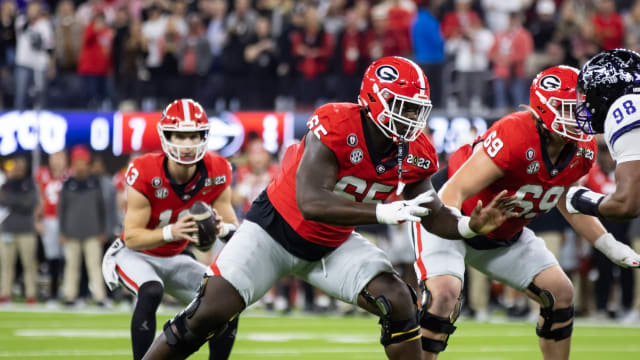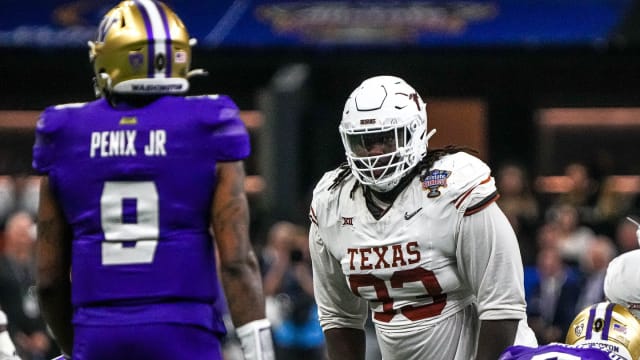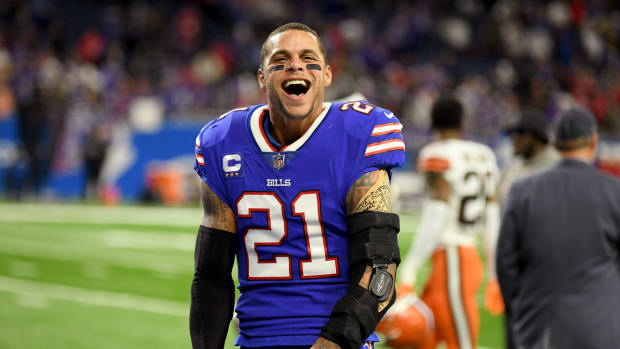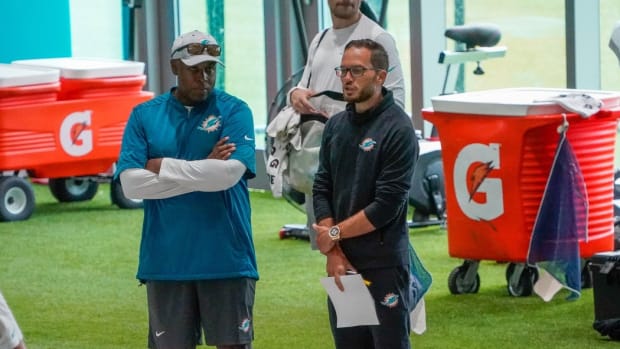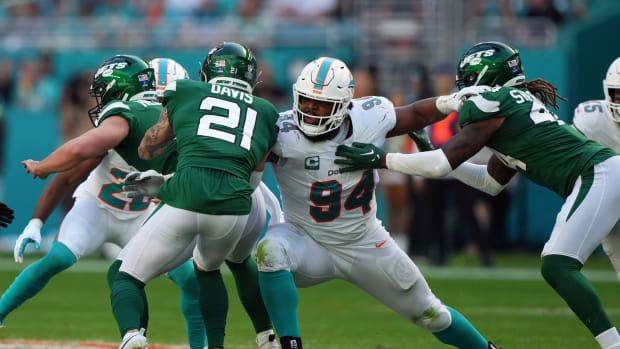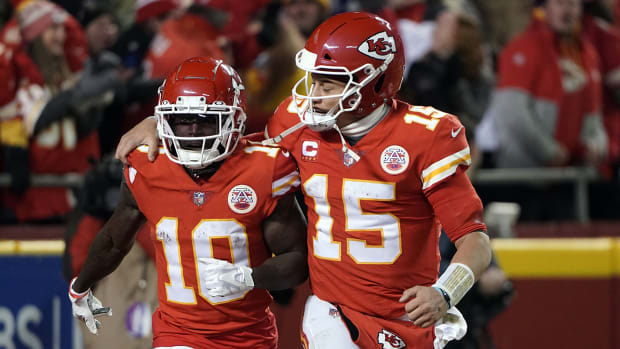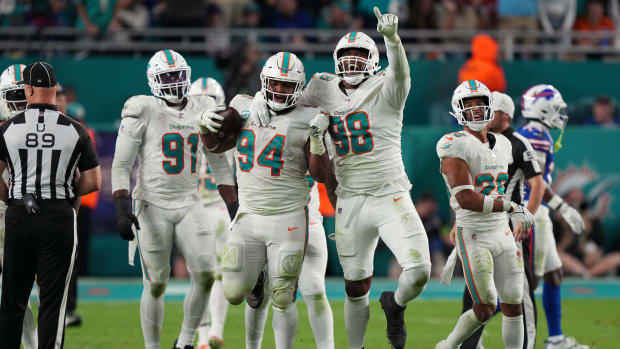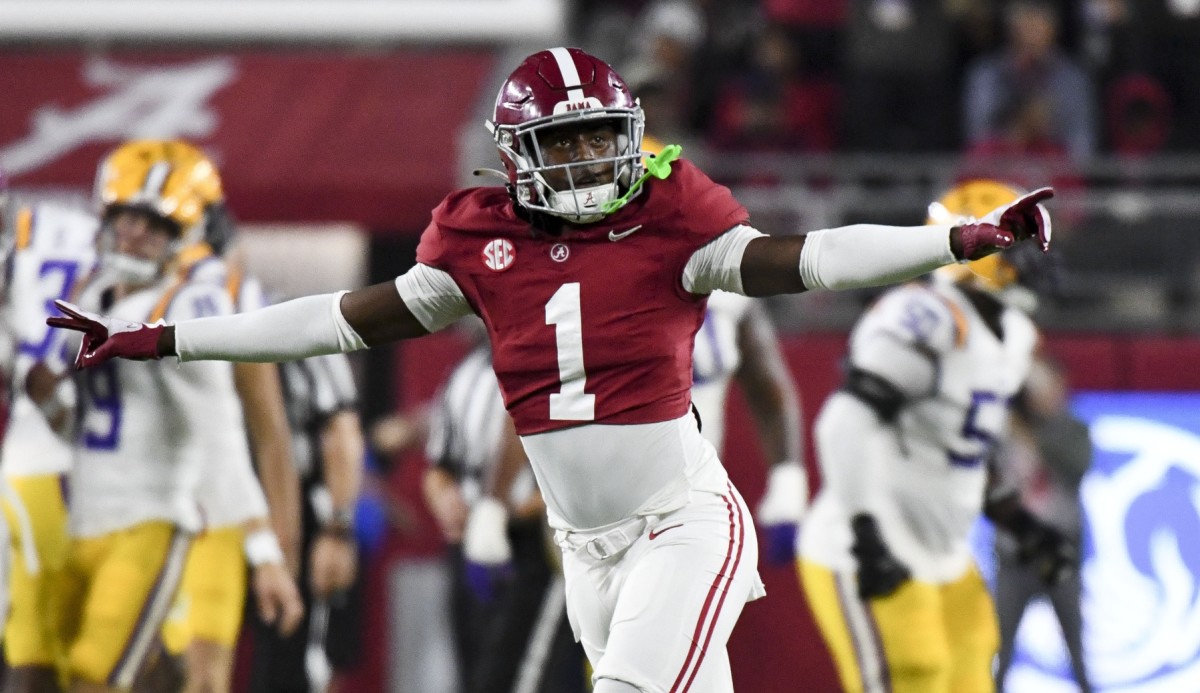
Combine Cornerbacks the Dolphins Should Monitor
The NFL’s annual scouting combine begins Monday, Feb. 26, allowing teams to evaluate each 2024 NFL draft prospect’s athletics abilities in on-field drills, interview them and put them through a medical check-up.
This series will provide fans with players to watch and monitor at each of the Miami Dolphins’ most significant positions of need, continuing with the cornerbacks
The Dolphins have at least one cornerback spot locked down with Jalen Ramsey. Outside of that, there are question marks. Xavien Howard might be cut to save money this offseason and the players behind him somewhat struggled last season.
Miami drafted Cam Smith in the second round last offseason, but he failed to get on the field much. We’re not writing him off, but he shouldn’t be relied on. Kader Kohou plays well in the slot, but when forced outside, he looks overmatched.
Ramsey and Howard aren’t getting younger, and the team’s young players are unproven.
Let’s look at a few cornerbacks who will be at the combine and could help the Dolphins bolster their CB room.
NFL Combine Cornerbacks to Watch
Nate Wiggins, Clemson, 6-2, 185
Quietly, Wiggins was one of the most improved players in the country this past season. Before the season, he was viewed as a high-upside player with tremendous physical tools but sloppy tape.
He cleaned it up in 2023 and could be one of the first cornerbacks off the board in April. Wiggins’ speed, change of direction skills, and instincts make him a fit in any defensive scheme.
The Clemson product is only 20 years old but has three years of starting experience. He’s a bona fide stud already and still has room to grow.
Wiggins would make a lot of sense for the Dolphins if they moved on from Howard. Wiggins could take his outside spot immediately and perform well enough to keep that side of the defense afloat while Ramsey anchors the other.
Ideally, Wiggins and Smith develop together and become the Dolphins’ cornerbacks of the future. There’s a fair chance Wiggins won’t make it to No. 21, but it’s a deep cornerback class, so it’s worth discussing.
Pay attention to how Wiggins performs in the shuttle drills and jumps. On tape, he looks wildly explosive for someone of his size.
Kool-Aid McKinstry, Alabama, 6-1, 195
For most draft analysts, McKinstry entered the 2023 season as CB1 but has since been passed by a few risers, like Wiggins. Regardless, McKinstry didn’t get any worse this past season — he’s still an excellent prospect.
Wiggins has a lot of upside, but McKinstry is a little more polished right now. He’s one of the few defensive backs Nick Saban gave significant playing time to as a freshman, and it’s obvious why.
McKinstry is never out of place on tape. He does an excellent job staying with receivers in man coverage and doesn’t abandon his post in zone coverage. He’s also got the length and ball skills to impact the catch point.
McKinstry would play on the outside of Miami’s defense and give it a steady presence by replacing Howard or providing depth behind him. McKinstry would cost the Dolphins their first-round pick, but there’s nothing wrong with investing in a premium position.
The key to how high McKinstry goes is how athletic teams think he is. Obviously, the NFL combine will play a part in that. If McKinstry checks all the boxes, 21 overall feels well within his range.
Kamari Lassiter, Georgia, 6-0, 180
Lassiter’s profile is similar to McKinstry’s. Lassiter plays assignment-sound football and is rarely caught giving up the big play. He’s versatile enough to operate in a zone or man-heavy scheme, too.
Lassiter is aggressive attacking downhill, which could lead him to be a slightly better zone coverage cornerback, but he holds up well enough in man coverage.
The Georgia product has a few weaknesses, though. The first is his overall athletic profile. Lassiter looks like an average athlete on tape, which isn’t great for a player checking in at just 6 feet and 180 pounds.
Also, he hasn’t gotten his hands on the ball much in his two seasons as a starter. Part of that is due to how well-positioned he is in coverage, forcing quarterbacks to throw elsewhere. However, he also left a few plays on the field.
If Lassister can prove he’s a solid athlete at the combine, he could be an interesting high-floor option for the Dolphins with one of their top selections.
Cooper DeJean, Iowa, 6-1, 207
DeJean is a unique player. Some teams might have DeJean slotted as a safety, but his tape at cornerback is good enough to warrant staying there long term.
The Iowa product makes a lot of sense for Miami because the team hired defensive coordinator Anthony Weaver from the Ravens. Weaver watched Kyle Hamilton become one of the NFL’s best young players in Baltimore.
Hamilton’s role was essentially playing slot cornerback. He had the size to be a plus against the run and the cover skills to hold up at all three levels of the field. DeJean isn’t Hamilton, but he’s in that same mold.
He moves exceptionally well for his size, is a force against the run, and has impressive ball skills. Those are the things that made Hamilton so successful last season.
If Miami wants to mirror what the Ravens did last season, drafting DeJean No. 21 overall isn’t a bad idea.
Cam Hart, Notre Dame, 6-2, 207
Sticking with bigger cornerbacks, Hart is another option the Dolphins could consider. Unlike DeJean, Hart won’t be a first-rounder and could last until Day 3.
That said, there’s a ton to like about his tape. Hart’s size allows him to bully receivers early in routes and limit the space they can create. He’s explosive, getting in and out of breaks, which is rare for a cornerback listed at 6-2.
Hart is expected to test well at the combine, especially in the vertical and broad jumps. He reportedly jumped 11 feet, 2 inches in the broad jump last offseason, putting him above the 95th percentile for cornerbacks.
Unlike the players listed above, Hart would be more of a project and less of an immediate-impact player. He needs to improve his route recognition and consistency in playing the ball down the field.
Still, it’s hard to find players built like him who are still explosive in their movements.
Max Melton, Rutgers, 6-0, 190
If bigger cornerbacks like Hart and DeJean aren’t Miami’s type, perhaps someone like Melton could fit the bill. Melton is viewed mainly as a slot cornerback at the next level.
The Dolphins have Kohou in the slot, but he might be needed on the outside, depending on how the offseason goes. Melton’s calling cards are his speed and competitiveness.
He can fly, and he should perform quite well in Indianapolis. His game against Marvin Harrison Jr. stood out on tape. Harrison Jr. beat him several times, but Melton hung in there for most of the contest.
He changes directions well, making him a good option in man-heavy defenses. He also has eight interceptions across three seasons of heavy playing time, which points to at least some ability to find the ball consistently.
Melton should be on the board on Day 3, giving the Dolphins a low-cost option to add an impressive athlete and competitor to their CB core.

